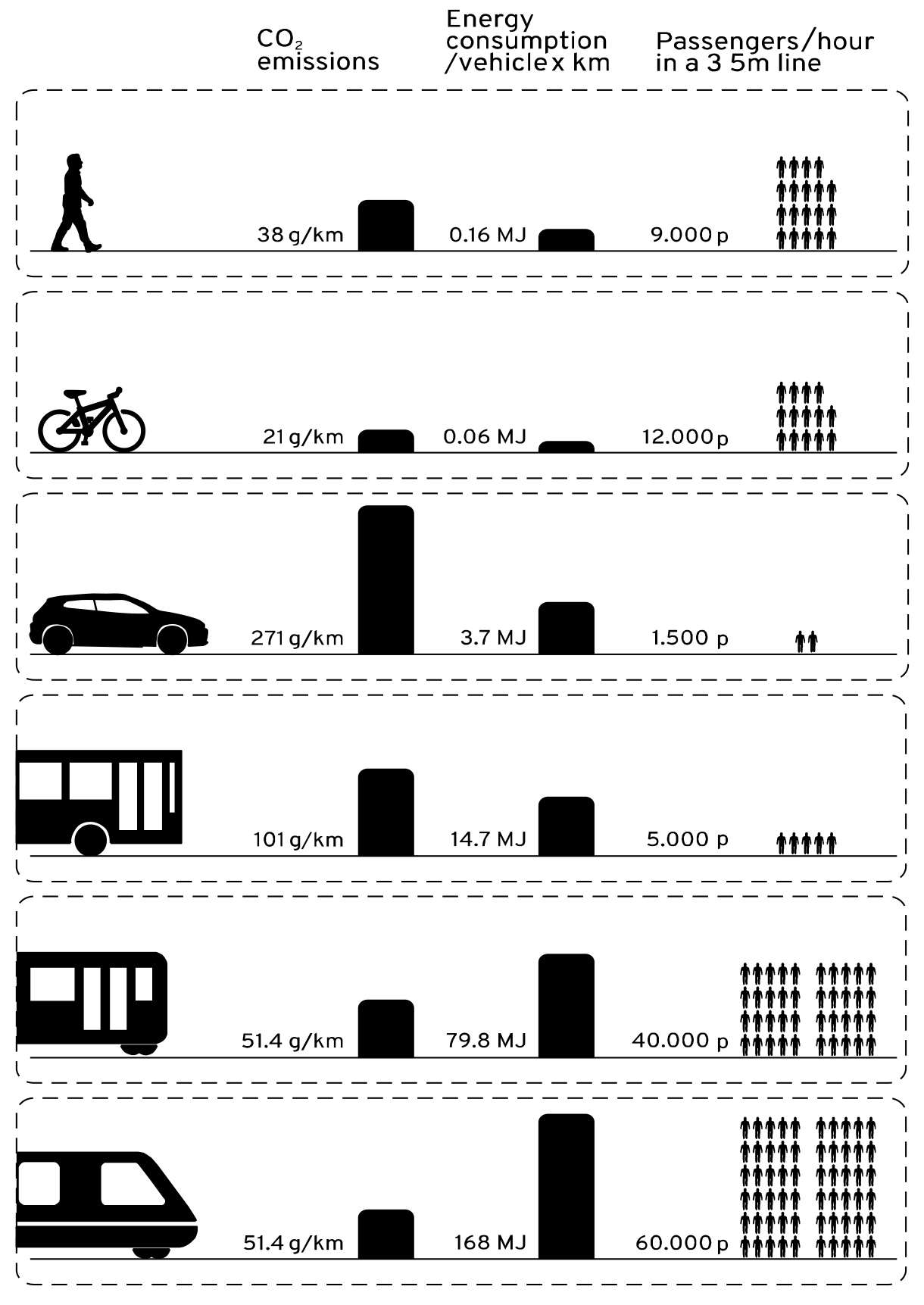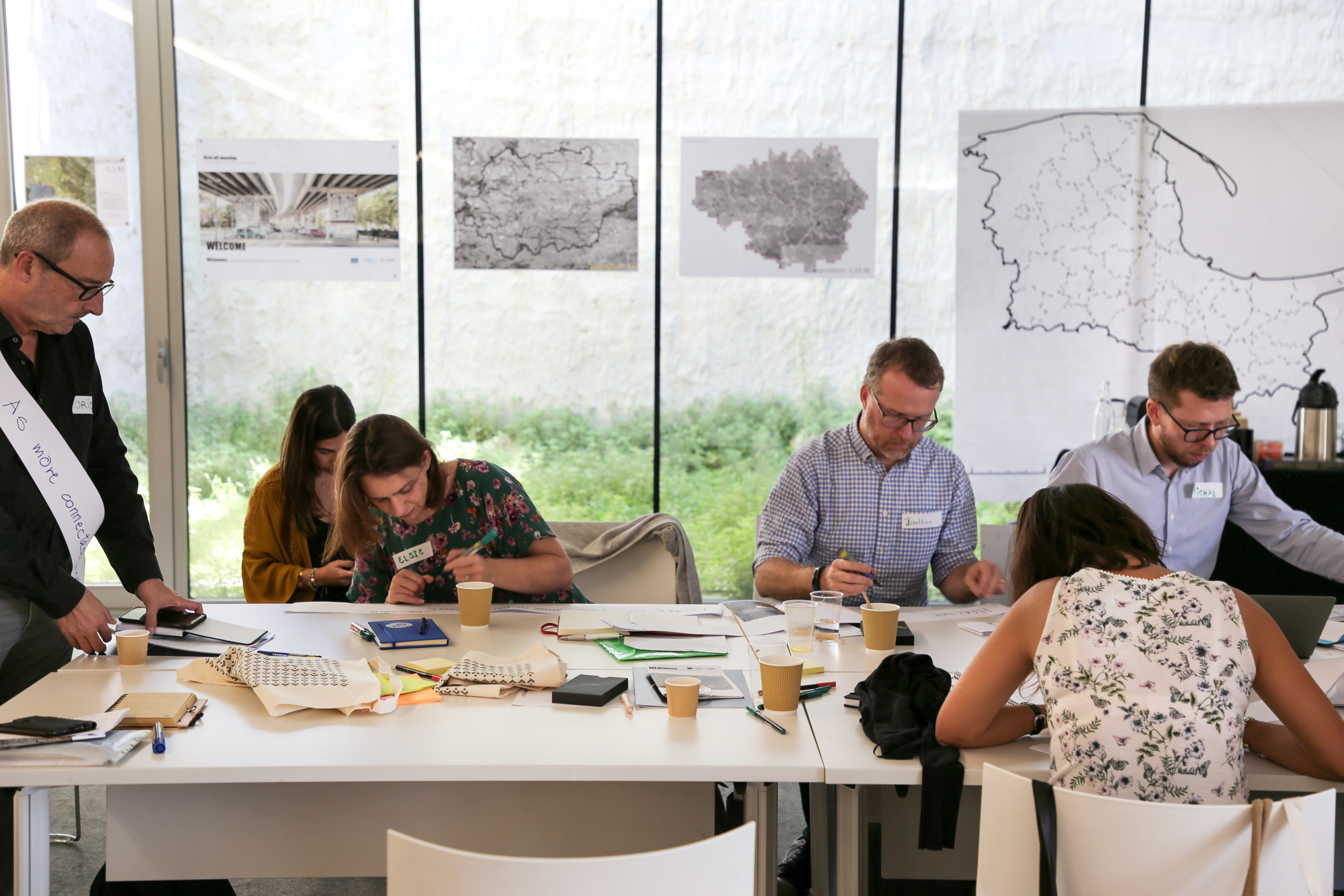Why is rethinking infrastructure important?
Edited on
22 February 2021RiConnect aims to rethink mobility infrastructure, and to do so, it is important to acknowledge the relevance of the challenges we are facing. Mobility causes a wide array of nuisances in our metropolises, such as pollution or car dominance, yet solutions to these issues need to tackle not only mobility, but also its infrastructure.

The fundamental aim of mobility infrastructure has always been to connect people, link settlements and structure territory. Human history has moved in parallel with mobility history. Humans have always hoped to be connected to civilisation through a network of paths, roads and bridges. As a society, we have perceived mobility infrastructure as 100% positive for centuries, “as a monument to something useful, necessary and collective”.

But looking at Europe now, where most of the population lives in urban areas, often fragmented and surrounded by overused, congested, noisy, and air-polluted mobility infrastructure, a question arises: is this the most adequate and efficient way to use this infrastructure? Is there another way? Can metropolitan areas develop more sustainable mobility, allowing citizens to move efficiently and fairly and simultaneously reduce impacts and externalities with significant social costs (urban segregation, stigmatisation, health disease, congestion, etc.)?
RiConnect proposes rethinking, transforming and integrating mobility infrastructure and the city around it to reconnect people, neighbourhoods, cities and natural spaces. Our vision is to develop more dynamic, sustainable, equitable and attractive metropolises where everyone can interact with each other and move about freely, regardless of age, social status and where they live.
In order to achieve this vision, the network develops planning strategies, processes, instruments and partnerships, promote public transport and active mobility, reduce externalities, and unlock urban regeneration opportunities.
Diagnosis

Due to a confluence of economic, technological and social factors, private use of automobiles became the main means of transport relevant to urban planning in the twentieth century. In a relatively short period of time, this transport means came to dominate the level of importance relative to others and take all the space of streets and roads that connect cities and towns. The expansion of this model that boosted suburbanisation required huge investment to build a segregated network that facilitated the transport between the city centre and the surrounding area, at the expense of human scale mobility. On average, every additional stretch of highway displaced 9% of the central city population in Europe between 1961-2011 (Pasidis, 2017). Moreover, in many cases, road design sought to exclusively handle specific challenges that created duplications and avoidable externalities, compromising the continuity of the local transport network.
This had serious consequences on the connectivity of active mobility (pedestrians and bicycles) and segregation of the urban fabric and natural spaces with low urban quality surroundings. This was not a reliable solution, given constant traffic congestion affecting the economy and quality of life. In 2018 in the United Kingdom alone, this issue cost nearly eight billion pounds (INRIX Research, 2019).
The urbanisation process in Europe is unstoppable. By 2050, almost 85% of Europe’s population will live in cities (United Nations, 2019). Furthermore, people nowadays are more mobile than before and this trend will continue into the future. In London for example, there were 26.7 million daily trips in 2015 with 32 million expected in 2041 (Transport for London, 2018). Finally, it is important to mention that mobility demands will grow significantly in the following years, stressing the current transport system even further.
The EU has also agreed to reduce greenhouse gas emissions by 40% by 2030 compared to 1990 levels (European Commission and UN-Habitat, 2016) in addition to reducing air and noise pollution levels, especially in metropolitan areas. In 2016, almost 22% of total CO2 emissions in Europe were generated directly by road transport. Cars are responsible for nearly two-thirds (European Parliament, 2019). In 2012 almost half a million premature deaths were attributable to fine particulate matter (PM2.5), ozone (O3) and nitrogen dioxide (NO2) exposure in the EU-28 (European Environment Agency, 2015).
In this context, metropolitan areas primarily need to optimise their existing mobility infrastructure to allow increased and more efficient human mobility throughout the metropolis that is fairer, and simultaneously do so with less externalities and a tight budget. In other words, do much more with less.
However, we must pose the following question: is it feasible to believe that this challenge can be addressed and a better metropolis can be developed, simply by improving mobility issues?
The RiConnect Chronicles 01: Kick-Off Meeting Issues such as why rethinking mobility is important were covered at the RiConnect Transnational Meeting 1 celebrated in Barcelona in September 2019, where all partners discussed the goals of the network and got to know each other. The Kick-Off Meeting was aimed to address the relevance of metropolitan planning, the need to redistribute mobility fluxes and the convenience of establishing synergies among stakeholders. A summary of the discussion is available at The RiConnect Chronicles 01, a record of events in the order in which they occurred, to highlight the most relevant ideas to the topic dealt with during this meeting. |
 Submitted by Stela Salinas on
Submitted by Stela Salinas on

